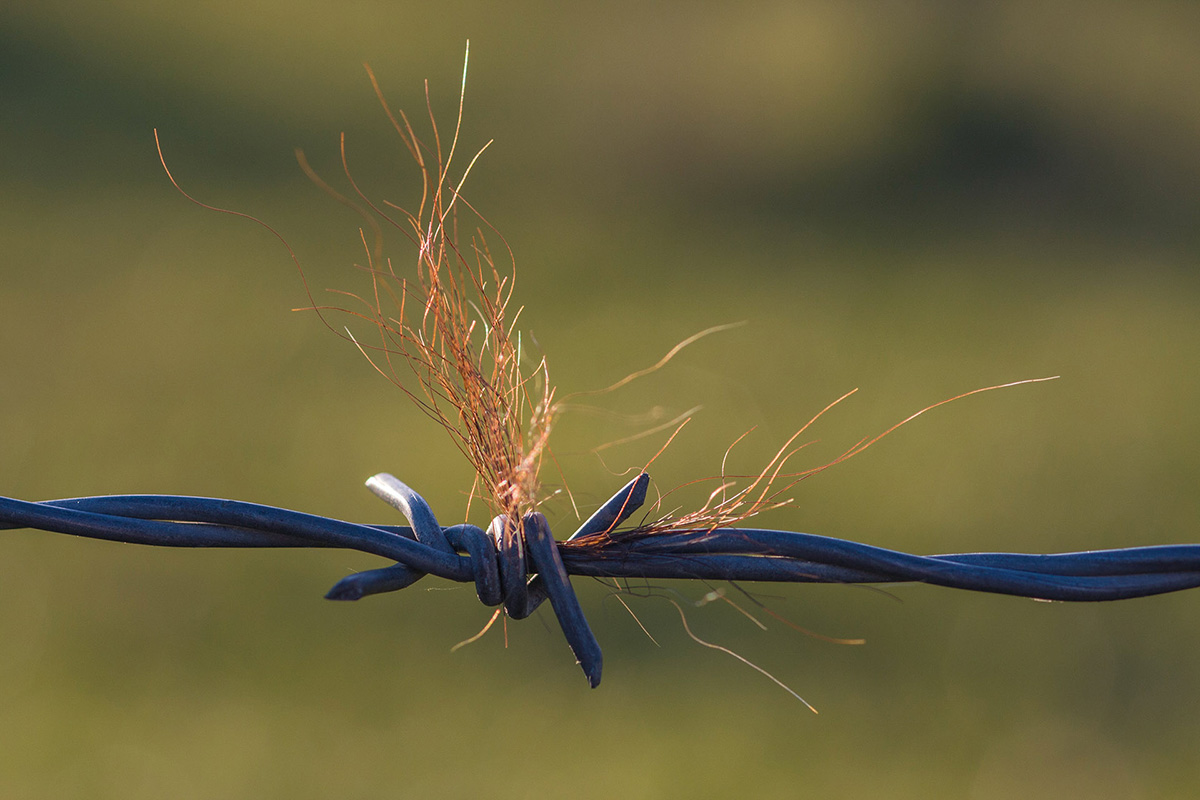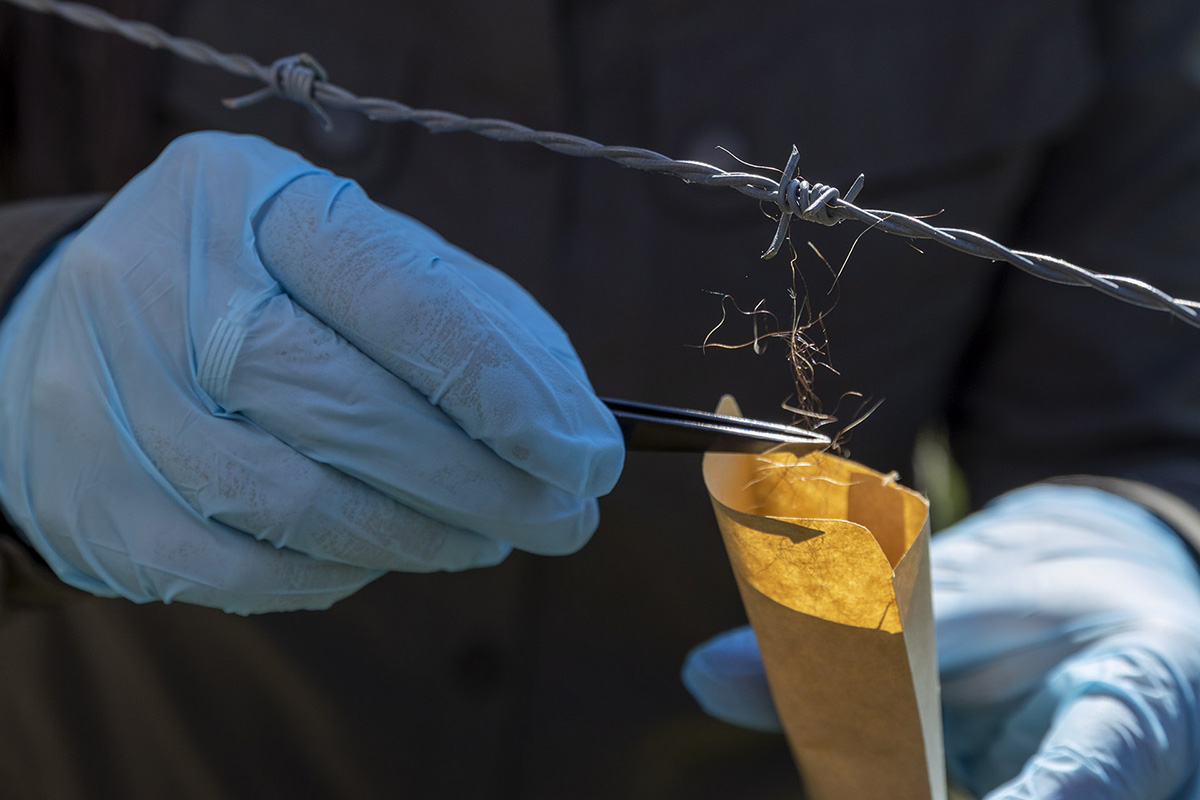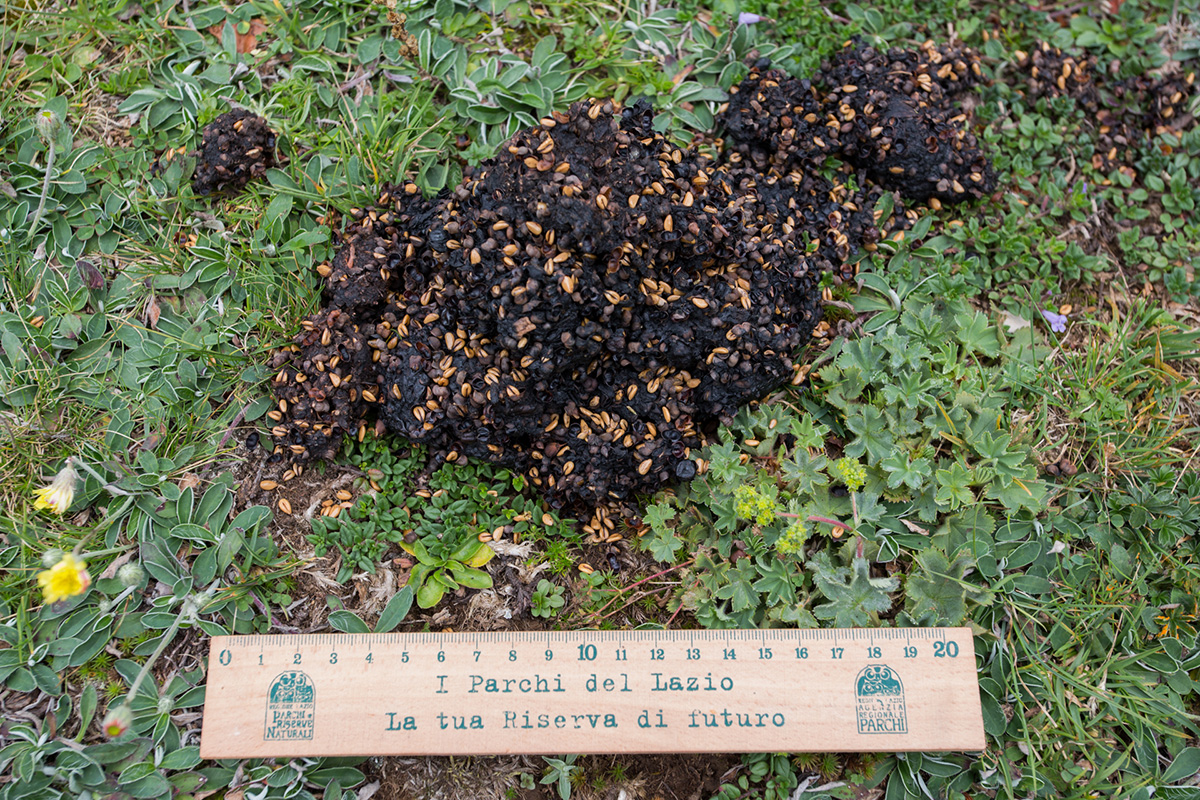Looking for bears
Getting to know the bear requires study, dedication, ingenuity and passion
Inspired by biologist Edward Wilson’s concept of biophilia, research stems from our innate tendency to focus our attention on life forms and everything that reminds us of them and, as anthropologist Jane Goodall maintains, to inevitably become emotionally attached to them.
Research begins with curiosity, in other words, asking yourself questions inspired by study or simple intuition. These questions lead to the most creative phase, formulation of hypotheses followed by experimentation in the field. Experimentation involves rigorous and conscious data collection, carefully planned in all aspects (what data, how much, where and when). But it is during analysis that the data come to life, helping us discover an animal’s ecological relationships. To sum up, when you apply curiosity and intuition with a systematic approach, you are conducting research. How can we step into a bear’s shoes while staying at the right distance and minimising our impact?
The expert Paolo Ciucci tells the story of research in the Abruzzo, Lazio and Molise National Park.
The identity of the bears is written in their hair and that is how we count them.
The elusive, nocturnal nature of these animals and especially the vast areas each bear can occupy makes counting them difficult. Well, with a good knowledge of the bear’ habits and using the techniques of forensic genetics, we can now not only find out how many bears there are in a given area, but also study the dynamics of these numbers (in other words, the population trends) and understand whether they are increasing, decreasing or remaining stable over time. Through specific analysis of the DNA collected from biological samples such as hairs, we can unambiguously identify each individual bear. How do you obtain hairs from a bear? This is where inventive comes in. Bears are dependent on food. Taking advantage of their appetite, researchers have devised a sort of bait by pouring a very smelly fluid made of blood and rotten fish onto a pile of rotten wood and covering it with leaves. In practice, the researchers are acting like a bear hiding an animal carcass. The “carcass” is surrounded by barbed wire at a distance of a few metres. To reach it, the bear passes over or under the wire, leaving (although not always) some hairs. These so-called hair traps are distributed regularly throughout the study area, thus increasing the probability of virtually “capturing” all the bears.


Technicians and researchers set up barbed wire “traps” to collect bear hairs used to identify the bears.
How can you be sure you’re getting a realistic count, very close to the real number? This is where statistics come in, with development of mathematical models and complex mathematical algorithms that provide the number of bears (the estimate) and degree of uncertainty associated with that value (confidence interval), calculating the probability they will be “captured”. Basically, suppose we count four bears, if a bear has a 50% chance of being captured (in other words, of its hairs being collected), this means we may have missed two bears, so the total number of bears present is six. How is this probability calculated? By collecting hairs regularly at 10-15 day intervals and counting the number of times each known bear is identified. It is a very laborious job, requiring the work of dozens of people for each collection, then hundreds of hours of work. The hair-collection season starts at the end of April and continues until the end of June! Unfortunately, despite every effort, this technique alone is not enough. Researchers prolong the collection season and thus increase the likelihood of “capturing” more bears by exploiting the bears’ habit of rubbing against trees and their fondness for Alpine buckhorn berries. Barbed wire is placed on the trees and around the berry-bearing bushes. The work is concluded in early autumn. If all this is repeated over a number of years, we can study how bear numbers vary over time.
“Research is an integral part of my life. It means going out into nature to see what happens and, above all, understanding why. Research has helped me understand, learn about and thus make contact with another living species.”
Karen Noyce
Research strategy and techniques applied in the Abruzzo, Lazio and Molise National Park over the last 16 years.
Many discreet eyes to study the bear’s reproductive capabilities.
Bears reproduce very slowly and this is why any change in the number of females breeding each year can drastically affect population trends. If the number of females is increasing over time, it is very likely that the number of bears is also increasing. This is why the technique adopted in the PNALM involves counting females with young. This is achieved by identifying and counting the females reproducing each year in a given study area, complemented by other data collection strategies, direct observations and use of camera traps. Targeted observations and camera trap monitoring are carried out from early spring to late summer throughout the study area, while, from August to September, simultaneous direct observations are made from around 30-40 fixed locations in the areas where the alpine buckthorn berries are ripening where the bears congregate each year. The strategic locations, times of day and seasons when the bears are most likely to be observed were identified through an experimental study initiated in the first year of the project. How to identify females with young and then count them? Contrary to popular belief, it is difficult, if not impossible, to distinguish one female from another. Three criteria are therefore employed. If a female is already known and has ear tags (positioned by researchers when the bears are captured and fitted with tracking collars) and the other is not, then they are different. If neither of the two is marked and they are seen at the same time, they obviously cannot be the same. And in all other cases? The females with tracking collars have taught the researchers in what way and how far a female moves about in the Park. Using this information, it is possible to determine with a very high probability whether the observed females are the same or not.

Since 2006, technicians and researchers have been counting females with their young in the PNALM using a variety of techniques, from direct observations to photographic monitoring.
The adult and reproductive females can be calculated based on the number of females with young. In the Park, females reproduce at least every three years. So in any given year, females that had cubs in the two previous years are unlikely to reproduce. Adding up the number of females with young counted in those three years therefore gives the number of adult females in the population capable of reproducing. How to interpret the data? The number of females with young counted should not be considered as an absolute number, but a good approximation of reality. We cannot, in fact, be sure that some family groups have not escaped our binoculars. However, we can use this number as an index, in other words, a number that tells us how births vary in the Park (for example, if they increase, decrease or remain stable), or even better, that tells us about the health of the population (if cubs are born, then the females are healthy and if the number of females reproducing increases, then so does the population). The same also applies to reproductive females. We know that most females breed every three years, but some may breed every two, or every four years. So, of course, by counting the females every three years, the aim is to get closer to the actual situation, to focus not on the numbers, but on the trend.
“For as long as I can remember, research has been my dream. It is my passion, my main interest and also important for society. Mankind is causing the loss of biodiversity, animal species and environments and I hope I can help show that animals are an integral part of our world.”
Andreas Zedrossser
Hairs and excrement can tell us about the eating habits of individual bears and how they change over the seasons and the years.
The feeding behaviour of the bears has been identified mainly by analysing the content of their excreta. Given the omnivorous nature of bears, the analyses are carried out seasonally and annually, with excreta collected on a monthly basis to identify the changing availability of the food sources used by the animals. The collection itineraries are designed to coincide with the routes followed by the bears as they move around, passing through as many environments as possible and in radial sectors throughout the Park. Where there are bears with tracking collars, collection was targeted on the known locations of the animals to maximise the probability of detecting every food source. The strategy adopted allowed more than 2000 excreta to be collected over a four year period, enabling us to describe the eating habits of the entire population. Quantification of the diet involves hours and hours spent in the laboratory, sampling the excreta (only two 50 ml samples per excrement are analysed), manually separating and identifying the undigested remains and measuring their volume. In the analysis phase, the volumes of undigested remains are converted into measures of biomass and assimilated energy by using correction coefficients (taking into account the digestibility of each food and its nutritional content) developed from food experiments conducted in captivity on brown bears in other study areas.

Technicians and researchers identify and quantify the undigested remains in bear excrement to study their eating habits.
In 2014, the hair collection conducted to count the bears enabled the diet of individual bears to be quantified by applying stable carbon and nitrogen isotope analysis. The isotopic signatures reflect the carbohydrate and protein components deriving from the diet and thus assimilated from a specific food source. As each food source has its own isotopic signature, hair analysis enables the bear’s diet one year prior to collection to be reconstructed. What’s more, since hairs grow gradually, by analysing successive segments of the hairs in order of growth from base to tip, it is possible to study the seasonal changes in the diet of each individual identified through DNA.
In 2021, the first results of a dietary study conducted between 2013 and 2014 involving isotope analysis of 35 hair samples from 27 different bears (16 females and 11 males) were published in an international scientific journal. What emerged? When compared with the study conducted between 2006 and 2009, the study confirmed that Apennine bears are mainly vegetarian, in other words, grasses and various fruits are the main meal in every season. Meat consumption continues to be secondary compared to other foods, peaking between March and July when bears feed mainly on red and roe deer and wild boar. In summer and autumn, the bears don’t let a single fruit escape their attention. In summer they mainly eat wild fruits, while in autumn, these are rivalled by cultivated fruit. Male bears are more voracious for meat in spring and autumn, while females prefer to search for grasses and ants in the former season and nuts in the latter. Although all bears have access to all foods, each bear was found to have its own preferred diet. Finally, the diets of confident and wilder bears do not differ greatly from season to season, although the former consume more cultivated fruit in autumn. The consumption of wild food generally prevails over food of human origin, once again confirming the wealth of food available in the PNALM. A wealth that must be preserved and supported.
“Research is important to me because I’m a curious person. There is nothing more fascinating than studying bears in the wild. They are intelligent, adaptable and do a thousand different things. Every day is a continuous discovery.”
David Mattson
The most effective technique for studying particularly elusive animals is satellite telemetry. This method enables the animals to be located and followed at a distance, but also to monitor their survival. The system consists of a GPS tracker incorporated into a tracking collar attached to the captured animal. The collar also has a VHF radio transmitter, enabling the animal to be located manually from a car or on foot via a receiver and antenna. Normally, however, information such as date, time and geographic coordinates are sent directly to the computer or mobile phone using specific applications and software. These collars are also capable of detecting the bears’ activity on a scale of seconds (moving or resting) by measuring the oscillations of the collar in three directions, thus providing information on the animal’s mortality by sending a message if the collar remains stationary for more than eight hours. The amazing thing about this technology is that you can dialogue with it. In other words, you can programme the collar whenever and however you want, asking it to let you know the location of the bear every five minutes, or once a day, depending on your research goals.
Satellite and digital cellular telephone (GSM) systems work together to track the bears’ movements.
PNALM staff engaged in all the stages leading to application of a tracking collar to female bear F24 and male bear M18, from installation of the snares to the actual capture itself.
But how do you capture a bear? For scientific, ethical and legal reasons, the captures are planned to ensure the absolute safety of the captured animals. The captures serve not only to fit the collar to follow the animals’ activity and movement, but also to collect biological samples (blood, nasal and rectal swabs and faeces) and biometric measurements (weight and morphometric measurements) to assess the nutritional status of the individuals. Special snares known as “Aldrich snares” are used to catch the animal’s leg with a snap mechanism equipped with safety systems including an anti-twist ring and spring-loaded tear-proof system to anchor it to a tree. Each snare is linked to a transmitter providing real-time notification of the capture, allowing the team to arrive at the site in less than 20-30 minutes. The snares are triggered at compulsory points of passage by experienced personnel, taking care not to leave any odours. Once captured, the animals are doped, examined, measured, marked and fitted with tracking collars. An antidote is then administered, enabling the animal to recover its strength and faculties immediately. On average, the entire procedure, from anaesthesia to actual release, takes no more than an hour.
Research and conservation can go hand-in-hand, the former providing the basis for making more informed and well-founded choices, the latter putting them into action.


